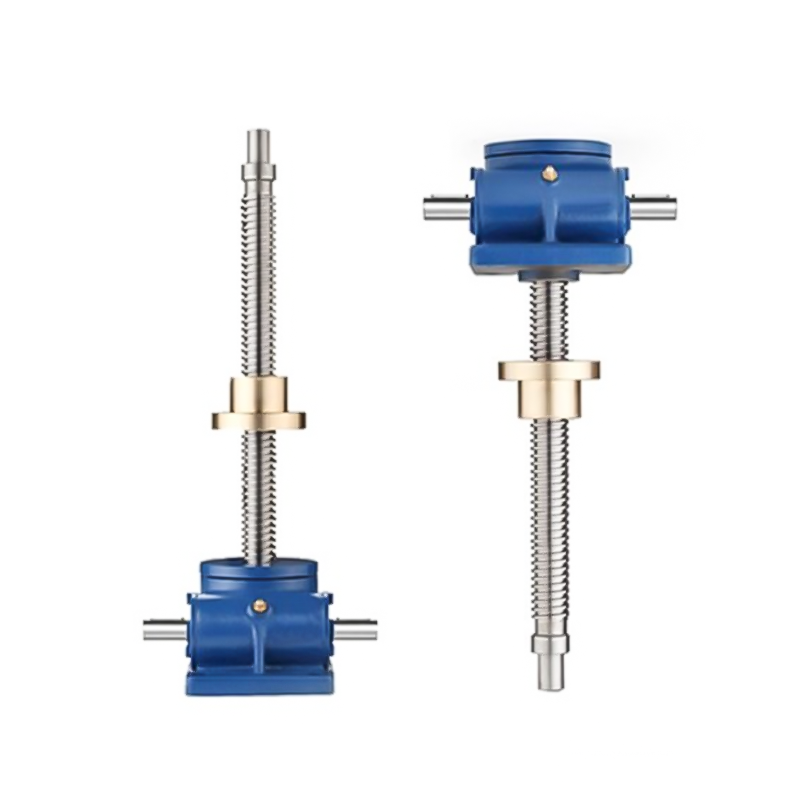The key differences between trapezoidal threads and square threads in lifting screws revolve around their efficiency, strength, manufacturability, and suitability for specific applications. Here's a detailed comparison:
Efficiency
Square Threads: Square threads are more efficient than trapezoidal threads because the thread profile minimizes friction. This makes them ideal for applications requiring lower energy consumption or higher mechanical advantage.
Trapezoidal Threads: While less efficient due to greater friction, trapezoidal threads offer better self-locking properties, reducing the need for additional locking mechanisms in certain applications.
Load-Bearing Capacity
Square Threads: Provide higher efficiency under load but are less robust due to their sharper edges, which concentrate stress.
Trapezoidal Threads: Have a stronger and more durable thread profile that distributes stress more evenly, making them better suited for handling heavy loads and prolonged use.
Self-Locking Capability
Square Threads: Typically not self-locking, meaning they require brakes or other mechanisms to hold a load in position, especially in vertical applications.
Trapezoidal Threads: Naturally self-locking at certain angles, enhancing safety by preventing back-driving under load without additional components.

Manufacturability
Square Threads: Difficult to manufacture due to their precise, sharp edges and the challenges of cutting and maintaining accuracy. This makes them more expensive.
Trapezoidal Threads: Easier to machine with conventional tools and more forgiving of minor errors during production, resulting in lower manufacturing costs.
Wear and Durability
Square Threads: More prone to wear over time because of the smaller contact area, especially under heavy loads or misalignment.
Trapezoidal Threads: Better suited for rugged applications because their larger contact area reduces localized wear and enhances durability.
Application Suitability
Square Threads: Preferred in precision applications like machine tools and jackscrews, where efficiency and reduced torque requirements are crucial.
Trapezoidal Threads: Commonly used in lifting screws, clamps, and other heavy-duty industrial applications where durability and self-locking are important.
Maintenance Requirements
Square Threads: Require more frequent lubrication and maintenance to reduce wear and maintain efficiency.
Trapezoidal Threads: Easier to maintain and tolerate debris or contamination better, making them more reliable in harsh environments.
Summary:
Square threads excel in precision and efficiency but are harder to manufacture and less durable under heavy loads.
Trapezoidal threads offer better strength, self-locking ability, and ease of production, making them ideal for heavy-duty applications and environments where maintenance access is limited.
The choice between these thread profiles depends on the specific requirements of the lifting screw application, such as load, precision, environment, and cost constraints.

 English
English 中文简体
中文简体 Español
Español русский
русский عربى
عربى








